Franklinstr. 5
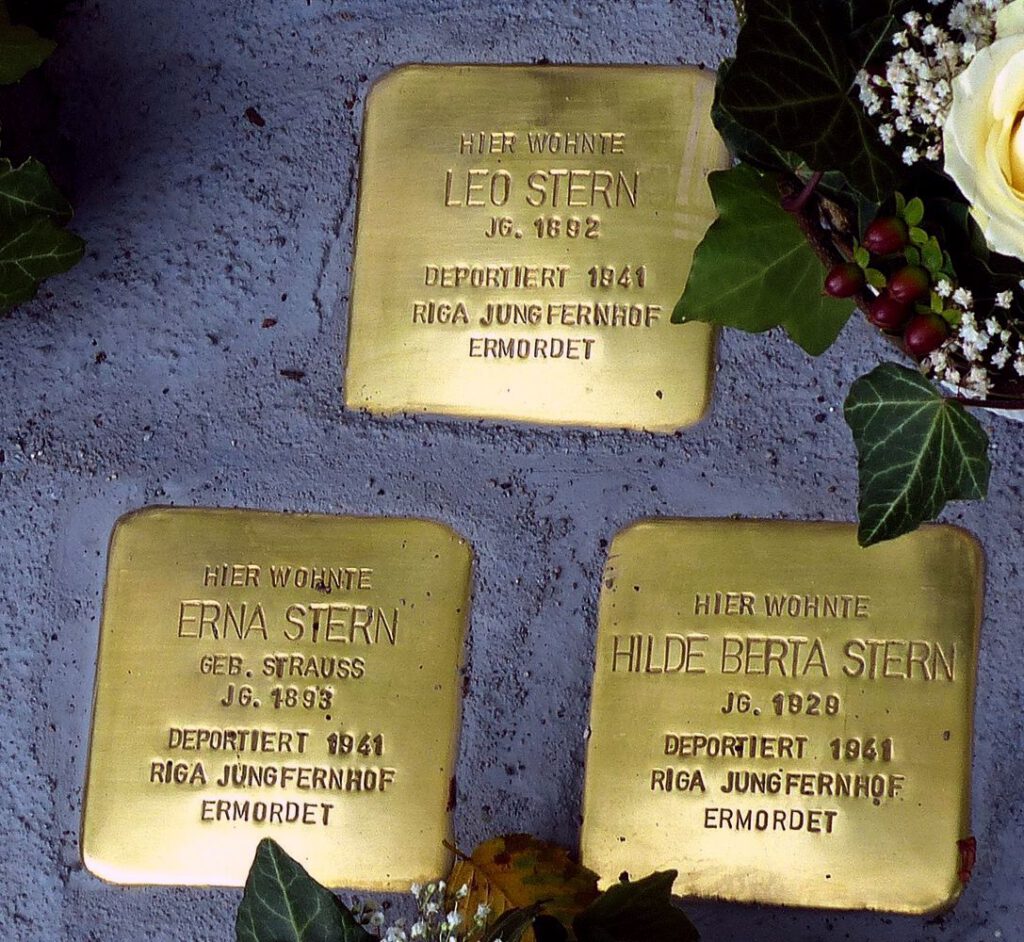
”… but they were very lonely”
In early 1936 the Jewish Stern family from Nordeck / Hessen (now part of the city of Allendorf) moved to Göppingen. They were 42-year-old Erna Stern, née Strauss and her one year older husband Leo together with their children, daughter Hilde Berta, born in 1929 and their sons Herbert Ludwig, born in 1920 and Berthold Artur, born in 1923. The couple had operated a thriving textile store with Erna as manager in Nordeck, which was a village of about 550 inhabitants at that time. It is documented that the Sterns owned a house with a piece of land. The Stern family was influential in the Jewish congregation. Leo’s father Meyer Stern was a synagogue elder and congregation president until 1923, Leo himself was treasurer of the congregation starting in 1932. The small Jewish community of Nordeck had in earlier years already experienced periods of strong anti-Semitism, but during the time of the Nazi regime the non-Jewish majority acted moderately towards them. The mayor saw to it that the synagogue was not destroyed during Pogrom Night.
It could not be determined from the examined documents why the Stern family moved away from Nordeck. Leo’s brother Heinemann Stern, who had left his hometown long before, remembered: “In 1935, in the so-called ‘good old days’, I visited my hometown. Nobody harmed the [Jewish – kmr] people. But they were very lonely. They only left their houses when it was absolutely necessary. Not from fear they would be harmed; but so they did not have to feel that they were being avoided over and over again. As a stranger and visitor I was still able to visit old friends in their homes, but the local Jewish people no longer did.” Most Jewish families who were able to flee had left Nordeck during the following years. Only the Lion family who was too poor to flee, and in 1941 and 1942 they were deported and murdered.
It is also not clear why the Stern family chose to move to Göppingen. Perhaps they had contacts through their business relationships? Their first home in Göppingen was located at Franklinstr. 5 and belonged to the Rothschild family, owners of a weaving mill in Uhingen. Betty Rothschild, a 58-year-old widow, allocated a major part of her house to the Sterns. They were able to bring their whole household, including furniture for several rooms, to Göppingen. According to a list of their possessions it can also be assumed that the Stern family had separate dinnerware for Pessach but otherwise did not keep a kosher home.
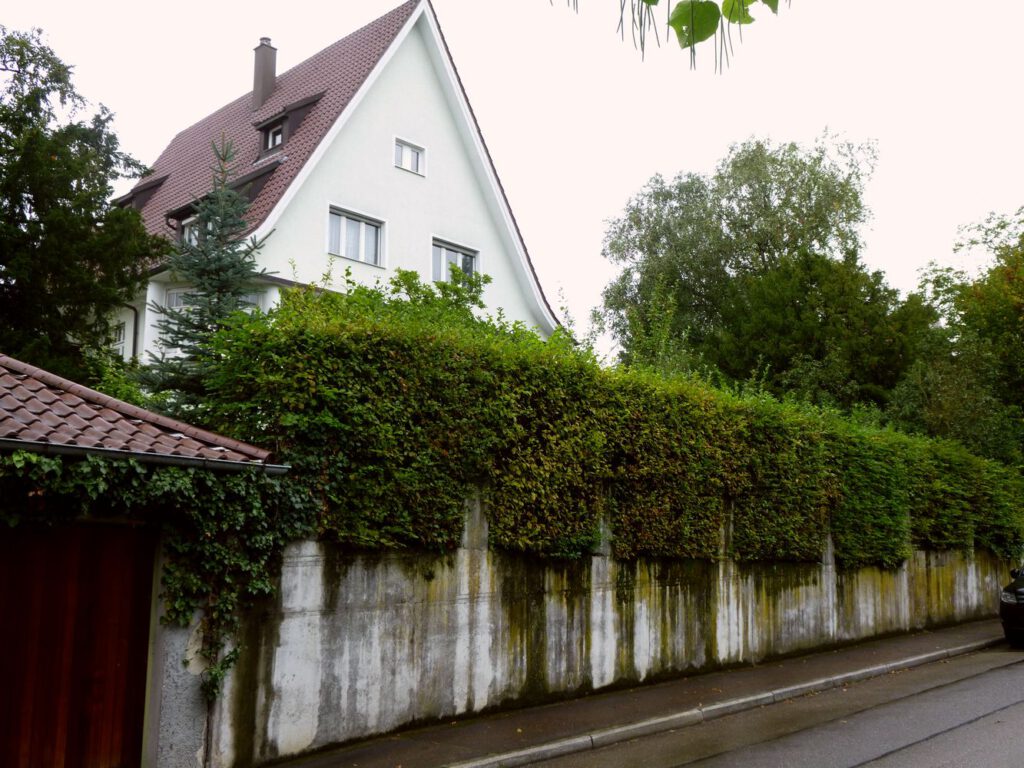
Leo Stern worked for his landlords as a custodian in the houses at Franklinstr. 5 and 7 which also belonged to the Rothschild family. Probably he worked at their weaving mill in Uhingen as well. From March 1936 until April 1937 he is listed as a ‘factory worker’ in the AOK documents [AOK = a sick fund]. From May 1937 until November 1938 he worked at the paper factory in Eislingen which was owned by the Jewish family Fleischer. Leo Stern earned RM 40 monthly for his job as a custodian, but the family was allowed to live rent-free. In addition he also earned approximately RM 160 monthly at the paper factory. Because of this rather meager income it is likely that Erna Stern also worked to earn some money, but there is no documentation for this. On July 26, 1938 Betty Rothschild sold the house at Franklinstr. 5 to the Württemberg finance ministry, and on November 10 Alfred Nagel, the Nazi county administrator, moved into an impressive apartment there. Most likely the Stern family had to move out because of this. It has to be pointed out that Leo Stern was not arrested during the Pogrom Night from November 9 to 10, 1938. He also is not listed as a prisoner of a concentration camp where Jewish men were detained after the Pogrom Night. Their 18-year-old son Herbert Ludwig would most likely have been a victim of Jewish persecution, but he probably no longer lived in Göppingen at that time. Herbert Ludwig possibly spent some time in Frankfurt/Main and eventually made his way to Palestine.
Berthold’s Hachschara and Flight
The path of Berthold Artur, the younger son of the Sterns, is easier to follow. According to the Göppingen documents, he moved to Rathenow/Brandenburg in June 1938 when he was only 15 years old. In retrospect, even if this decision most probably saved his life it must have been difficult for his parents to let their 15-year-old son move into an uncertain fate. Berthold’s destination certainly was not the small town of Rathenow but the nearby ‘Landwerk Steckelsdorf’. This Jewish establishment had a Zionist background and it was there that young Jewish people were being prepared for life in Palestine: ’Hachschara’ is the Hebrew term which outlined the educational goals of this facility in which young people were specifically trained in manual and agricultural skills. The organizational structure of the ‘Landwerk’ followed the example of the kibbutz, and the steering committee organized emigration to Palestine as well. But only a single group of 15 young people actually made it to the Middle East, as Ezra Ben Gershom describes in his memoirs. (In: David – Record of a Survivor). So it is quite possible that Berthold Artur Stern and his companions got on a Danube ship in Vienna in September 1940 and arrived in the harbor of Haifa in November after they and other refugees had changed to three oceangoing ships in Rumania. However, before the passengers who were exhausted from the long trip could land, they were stopped by ships of the British military. The British forced the passengers of two of the three refugee ships to switch onto the ship ‘Patria’, on which they were to be deported to the island of Mauritius. In order to prevent this, the Jewish commando group ‘Haganah’ smuggled an explosive device on board of the ‘Patria’. Tragically, the fighters had miscalculated the amount of dynamite needed and the ship sank much faster than expected. Approximately 270 Jewish refugees died in the harbor of Haifa – but none of them were from the Steckelsdorf group including Berthold Artur Stern. The British showed mercy to the survivors of the ‘Patria’ and allowed them to go ashore, but the passengers of the third refugee ship were exiled to Mauritius.
Hilde Berta – At The Jewish School?
While her brothers were preparing for their escape to Palestine, Hilde Berta probably attended the Jewish school which had recently been founded in Göppingen in September 1936. The Rabbi’s house (Freihofstr. 46) served as the schoolroom (see biography of Fritz Max Erlanger). Her name as a classmate is in the poetry album of Beate Dörzbacher, who attended this school.
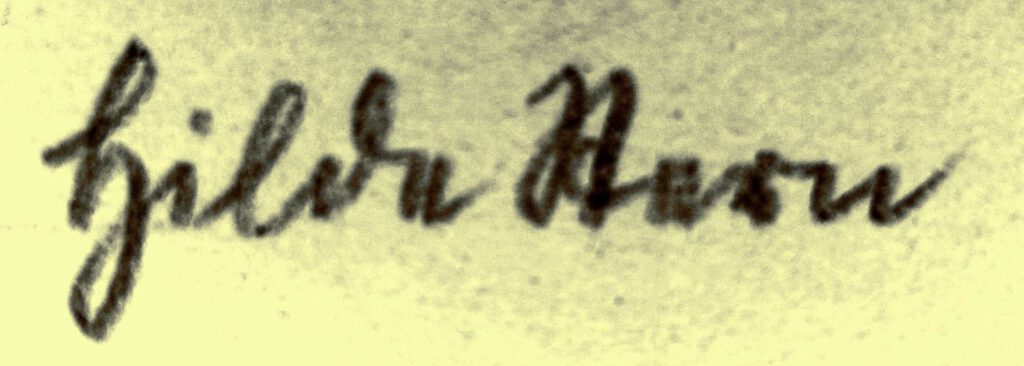
Even if Hilde Berta had found companionship with other students, it most likely became more and more lonely for her. Hardly any Jewish children remained in Göppingen; most of the ones who did can be seen on a photo taken by Inge Auerbacher’s father in winter 1940. (She would not have been allowed to have ‘Aryan’ children as her friends). Hilde Berta Stern most likely was the third girl from the left in the back row. The photo was taken at the ‘Judenhaus’ [Jewish house] at Metzgerstr. 16 in Göppingen which belonged to the Geschmay family. It is not known if the Stern family found different living quarters after they had to move out of their Franklinstraße residence and before they were ordered to move to Metzgerstraße. They probably would not have been able to take all of their household goods with them to Metzgerstraße. Some of their possessions would probably have been auctioned off, the tax office (the Nazi regime) being the beneficiary. It is very likely that various pieces of their furniture could still be found in some Göppingen households.
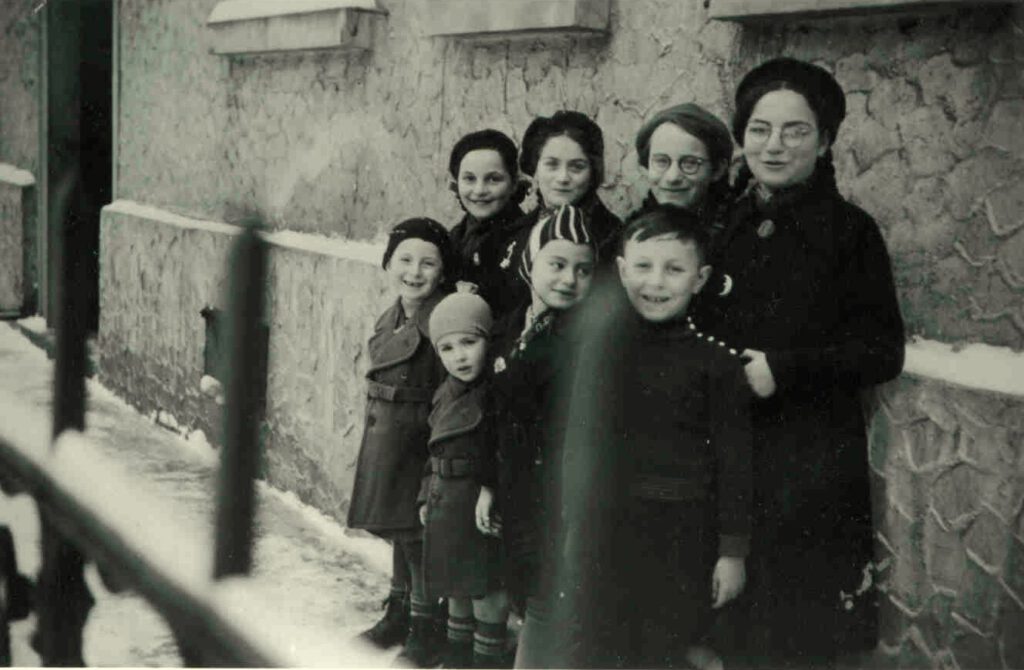
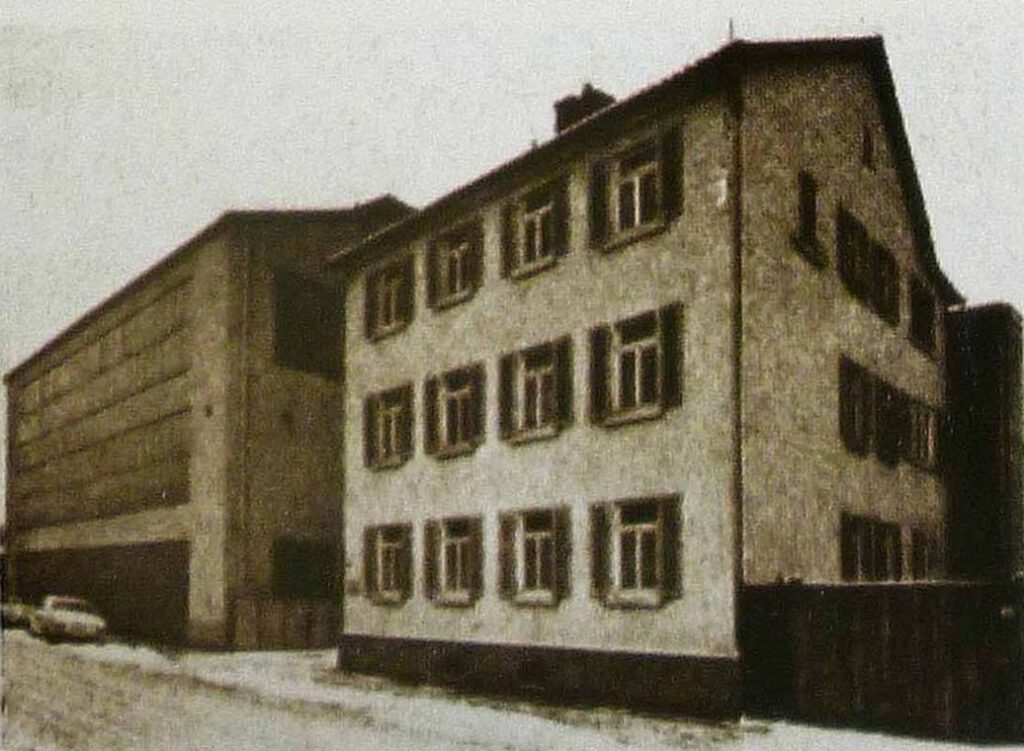
Heinemann Stern – A ‘Celebrity’ in the Family
Leo Stern, born in 1892, was the youngest of five siblings. His 14-years-older brother Heinemann Stern gained nationwide prominence. He had studied to be a teacher and became a well-respected educator who wrote authoritative texts on teaching concepts and methodology. The highest point of his career in education was when he became the chairman of the Jewish Teachers Association of Germany. In addition, Heinemann Stern was involved with the ‘Central Association of German Citizens of Jewish Faith’, of which he became a member of the governing board. A very interesting testimony of that time which reflects Jewish life from an ‘inside view’ is his book “Why Do They Hate Us?” which he wrote after his emigration.
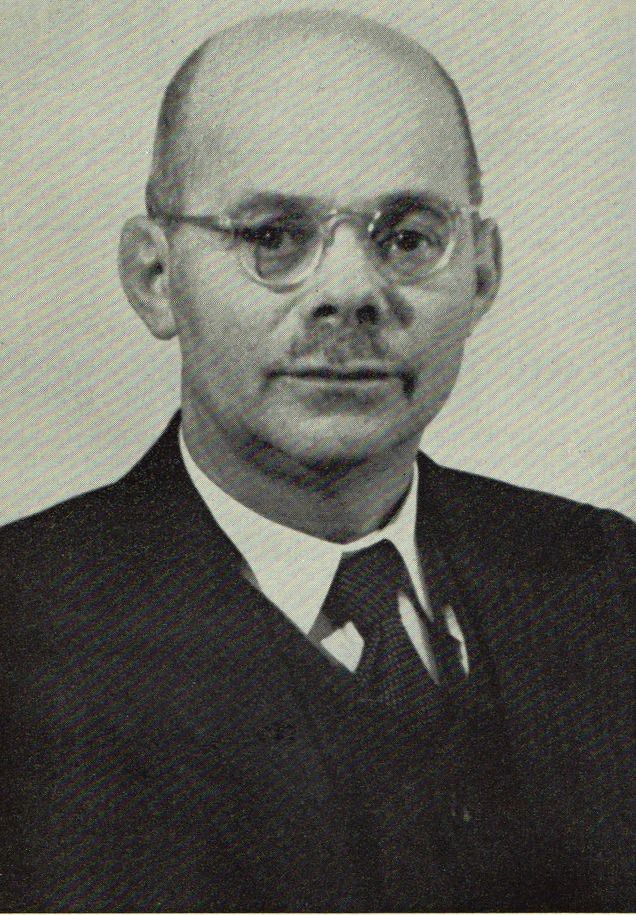
In May 1940 Heinemann and his wife fled to Rio de Janeiro, but not without first saying good bye to his relatives:
“In Munich we stayed an extra day so we can say farewell to my youngest brother and his family who have come from Göppingen. (…) We left behind my sister in Berlin (her two daughters in Holland) and a brother and his wife and child in Southern Germany. In their last letters at the end of 1941 it is evident that they were expecting to be deported hourly.”
The Hour of Deportation…
…began on November 28, 1941, when Erna, Hilde Berta and Leo Stern were taken to the railroad station by Göppingen police officers. They were among the first Jewish citizens to be deported from Göppingen, not counting the ‘Polish operation’ in October 1938. A total of 39 persons, among them nine children and juveniles between the ages of three and fourteen, were taken into custody. Three days after their arrest in Göppingen the deportation train left from Stuttgart Nordbahnhof [northern railroad station] and reached the Latvian city of Riga three days later. Together with approximately 1000 other Jews, the group from Göppingen was housed at the country estate of ‘Jungfernhof’, several kilometers outside the city. Then fourteen-year-old Richard Fleischer reported about the misery of the train ride, the arrival in Riga and the cruel living conditions. Most of the people from Göppingen interned at ‘Jungfernhof’ were murdered on March 26, 1942 – they were taken to the nearby woods and were shot while standing in front of ditches which had been excavated there. The perpetrators were the German SS and ‘Security Police’ supported by Latvian auxiliary police. Most likely Erna, Hilde Berta and Leo Stern lost their lives in this way.
None of Erna Stern’s close relatives, the Strauss family from Bavarian-Swabian Binswangen, were murdered. However, there were victims among Leo Stern’s relatives: Leo’s five-years-older sister Berta had married Julius Hess, and they had twin daughters named Hannelore and Rosemarie. After her divorce from Julius Berta lived in Berlin-Steglitz where she had her own grocery store starting in 1934 and which she operated successfully until 1938. Since the beginning of 1939 her two daughters lived in Utrecht in the Netherlands (Who gave the 13-year-old children refuge there?). In 1943, the Netherlands were occupied by Nazi Germany, and the twins were deported via Camp Westerbork to Sobibor, where they were murdered on March 5. At that point in time, their mother was already no longer alive. In 1941 Berta Hess was forcibly taken from Berlin, but it is not known where she has been murdered during that same year.
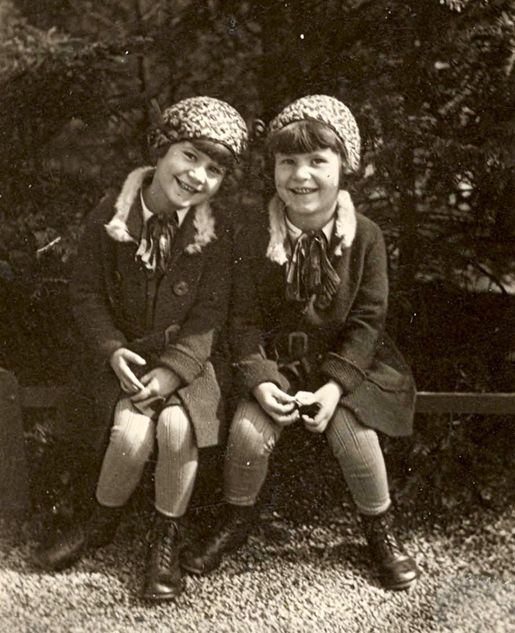
The two sons of Erna and Leo Stern first lived in Israel, then emigrated to the United States in 1960. Herbert Ludwig Stern lived and worked in a factory in Denver, Colorado, Berthold Artur (Abraham) Stern lived in New York.
Descendants of Heinemann Stern live in Israel and in Brazil.
On October 2, 2013, Stumbling Stones in memory of Erna, Hilde Berta and Leo Stern were placed in front of the house at Franklinstr. 5, where the family had initially found a generous reception after their arrival in Göppingen.
(22.07.2023 kmr / ir)


















outros descendentes de Heinemann Stern, moram no Brasil. São os filhos e descendentes de Seu filho Ludwig Alfred Stern que se casou com Margot Levy. Em Israel estão os descendentes da filha de Heinemann, Margareth
Thank you very much for your information, Roberto!
I would like to translate your post.
Roberto Stern schreibt:
Weitere Nachkommen von Heinemann Stern leben in Brasilien. Sie sind die Kinder und Nachkommen seines Sohnes Ludwig Alfred Stern, der Margot Levy heiratete. In Israel leben die Nachkommen von Heinemanns Tochter Margareth.